Australia is a beautiful country with diverse plant life. It is the world’s sixth-largest country, and its specific geographic location has given it the ability to build unique ecosystems. In the southeast region of Australia exists the state of New South Wales. Home to beaches, outback towns, and rainforests, there is no shortage of plant life in New South Wales. While some are beautiful and well-known, others are dangerous. Today, we will cover 10 of the dangerous plants that grow in New South Wales in depth. At the end of the article, we will provide a more comprehensive list of 20-plus dangerous plants that grow in this section of Australia.
Yellow oleander (Thevetia peruviana)
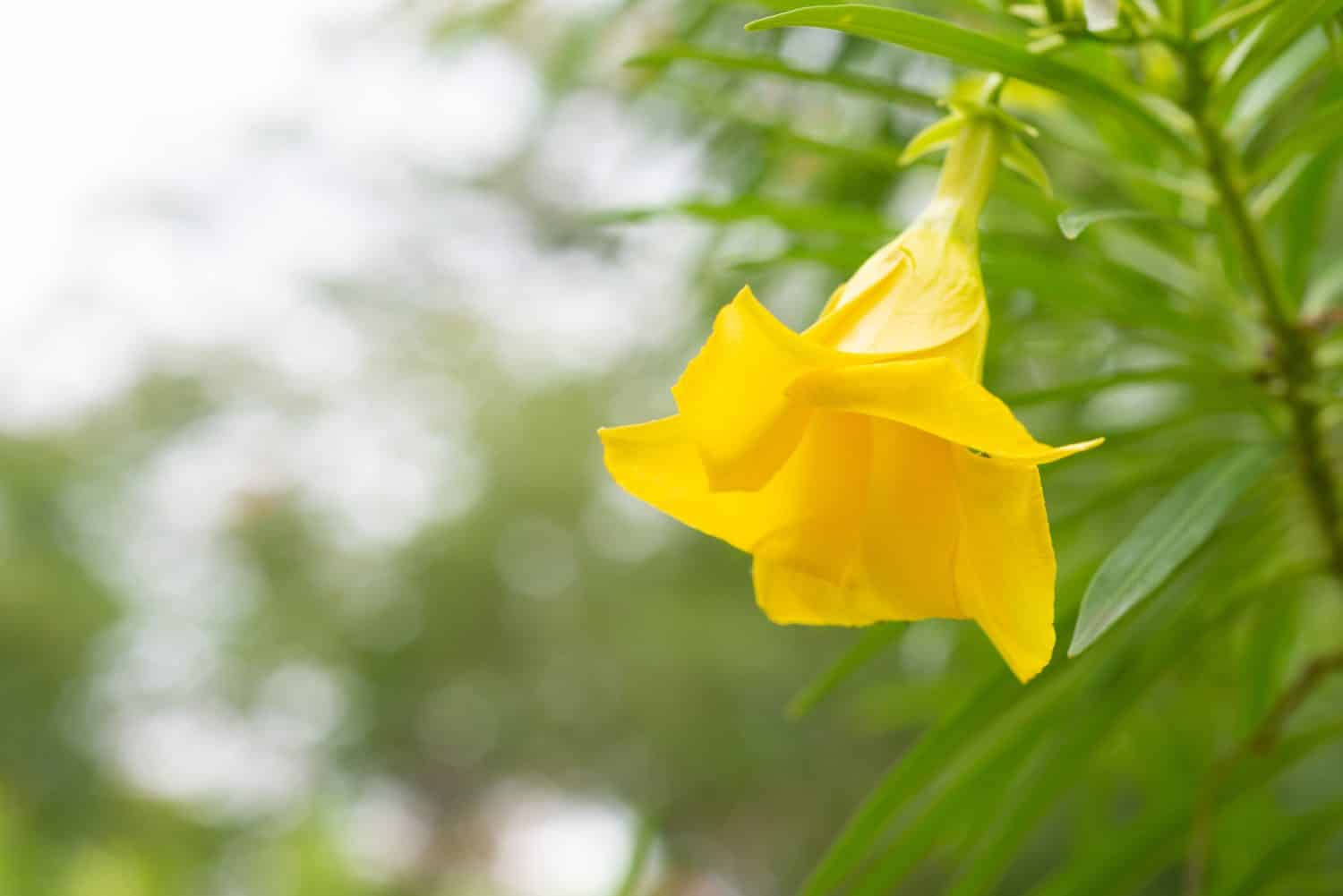
All parts of this plant are toxic.
©MT.PHOTOSTOCK/Shutterstock.com
People mostly find this tropical shrub in warm climates, and scattered populations exist across New South Wales. This dangerous plant boasts yellow flowers and long, glossy, willow-like leaves. All parts of this plant are toxic. The seeds of this plant appear particularly appealing but do not let that appearance fool you. Consumption of this plant causes nausea, vomiting, abdominal pain, diarrhea, and more.
Castor Bean plant (Ricinus communis)
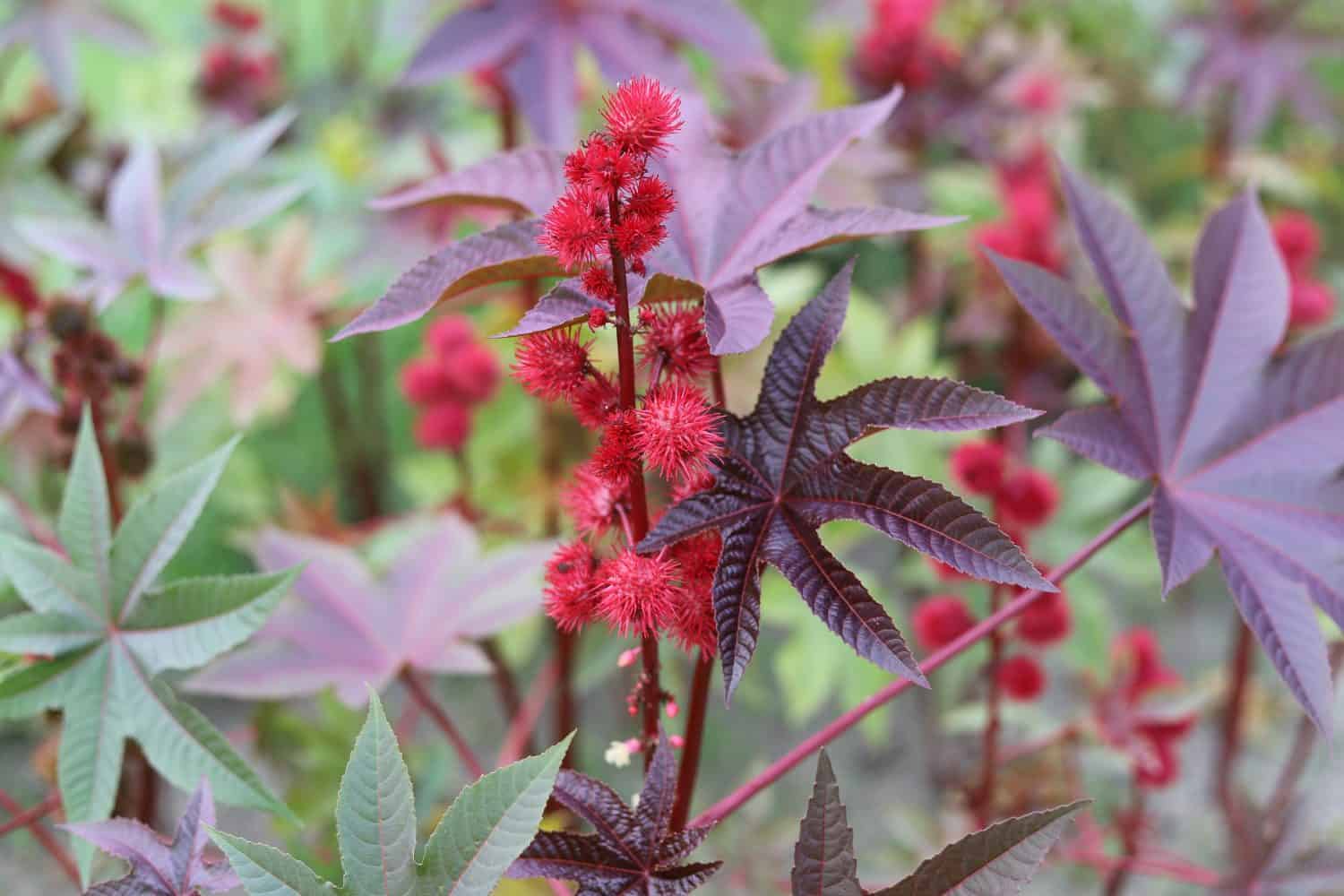
The oil from this plant contains a toxin called ricin, which is toxic to humans.
©Kabar/Shutterstock.com
The castor bean plant is another dangerous plant that grows in New South Wales. It is common along the coastal regions and is a fast-growing shrub with a lot of variation in its appearance. Leaf color may vary, but they are usually star-shaped with toothed edges. Additionally, the flowers are clustered in spikes, and the leaves have a strong smell.
The oil from this plant contains a toxin called ricin. It is toxic to humans and can cause serious harm and, in some cases, death. This plant also affects livestock when their grain is contaminated with the seeds.
Silverleaf Nightshade (Solanum elaeagnifolium)

This plant grows in most parts of New South Wales and appears upright and branched.
©ervin herman/Shutterstock.com
Silverleaf Nightshade is the next dangerous plant that grows in New South Wales. This weed grows in dense colonies. It grows in most parts of New South Wales and appears upright and branched. Its leaves are silvery-green on top, and its flowers are star-shaped when opened. Considered a toxic plant to both humans and cattle, symptoms can include diarrhea, headaches, arrhythmia, and even coma or death. Although poisoning from this plant is uncommon, it is best to be aware.
Sea Spurge (Euphorbia paralias)

This weed releases a sap that causes skin irritation.
©fritz16/Shutterstock.com
This small, multi-stemmed shrub lives near coastal areas. It is mainly found along beaches and has blue-green leaves and yellow-green flowers. This weed grows in thick patches and spreads quickly. It can change the shape and structure of sand dunes and limit your walking path when visiting the beach.
This weed releases a sap that causes skin irritation and can be painful and dangerous when coming in contact with your eyes.
Stinging Nettle (Urtica dioica)
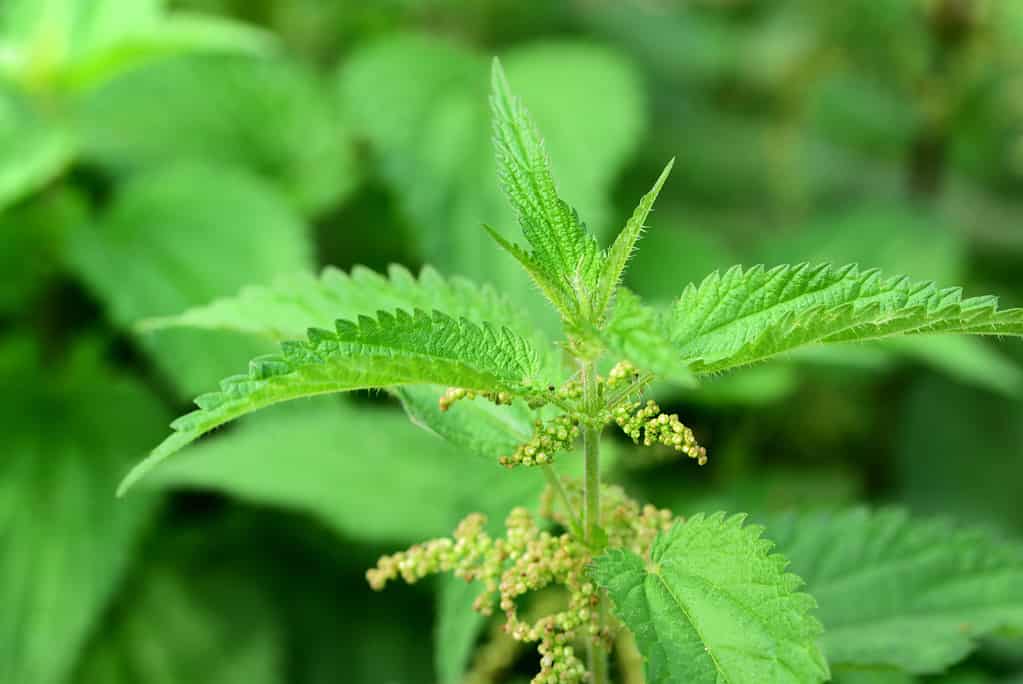
Although this plant can be problematic, people still regularly consume it.
©Ulrike Leone/iStock via Getty Images
This wild green plant often inhabits areas near streams, creeks, and open woodlands. In Australia, it mostly inhabits rainforests and most of the New South Wales coast.
Its genus name is Urtica, which in Latin translates to “to burn.” A proper name, considering that this plant is armed with tiny hairs and serrated leaves, both of which shoot chemicals onto your skin. These chemicals, such as histamine, can cause stinging and swelling. Although this plant can be problematic, people still regularly consume it.
Hemlock (Conium maculatum)

This plant is considered highly toxic to both humans and animals.
©iStock.com/gabrielabertolini
Hemlock is another dangerous plant that grows in New South Wales. This herb grows upright and has hollow stems with fern-like leaves. The leaves have a strong, offensive odor if you crush them, and this plant is considered highly toxic to both humans and animals. It is found in most regions of New South Wales and often occurs along roadsides and riverbanks.
If a person comes in contact with it, it can cause nervousness, trembling, and respiratory disease. Experts consider it highly toxic, and you should take proper precautions if you are in an area where hemlock may be present.
Poison Ivy (Toxicodendron radicans)
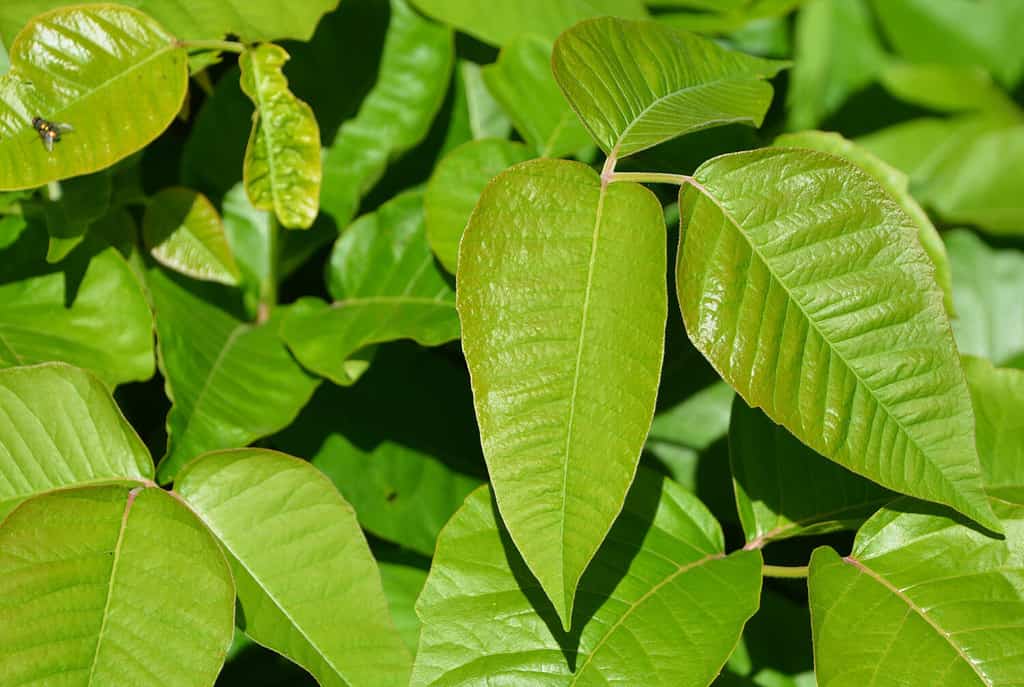
The “normal” appearance of this dangerous plant is the infamous shiny three-leafed compound leaves.
©meunierd/Shutterstock.com
This familiar plant has been known to cause unpleasant reactions in humans in various parts of the globe. While this plant is not native to Australia, it spreads across most of the continent, including New South Wales.
The “normal” appearance of this plant is the infamous three-leafed compound leaves. These leaves appear glossy, smooth-edged, and have pointy ends. Additionally, the green leaves showcase hues of red during the warmer seasons.
This plant contains a substance called urushiol on its leaves, stems, and roots. This is the substance that causes people to have adverse reactions when coming in contact with it. Poison ivy usually causes a skin rash with redness, itching, swelling, and blisters. Additionally, consuming the plant can cause gastrointestinal upset.
Blind Cactus (Opuntia rufida)

The blind cactus can be found across the northwest region of New South Wales.
©Lee ArtPhotos/Shutterstock.com
The blind cactus and various other types of cacti are another type of dangerous plant. Cacti have barbed bristles, which can poke and harm both humans and animals that come into contact with them. The blind cactus is found across the northwest region of New South Wales and grows best in open, arid areas. It has green pads covered in velvety hairs and red-brown barbed bristles. It also has yellow flowers.
If you come in contact with the barbed bristles, they can cause various skin irritations such as itching, burning, and blisters. Additionally, the bristles can detach from the plant in the wind and can cause eye irritation or blindness if blown into the eye.
Pellitory or Asthma Weed (Parietaria judaica)
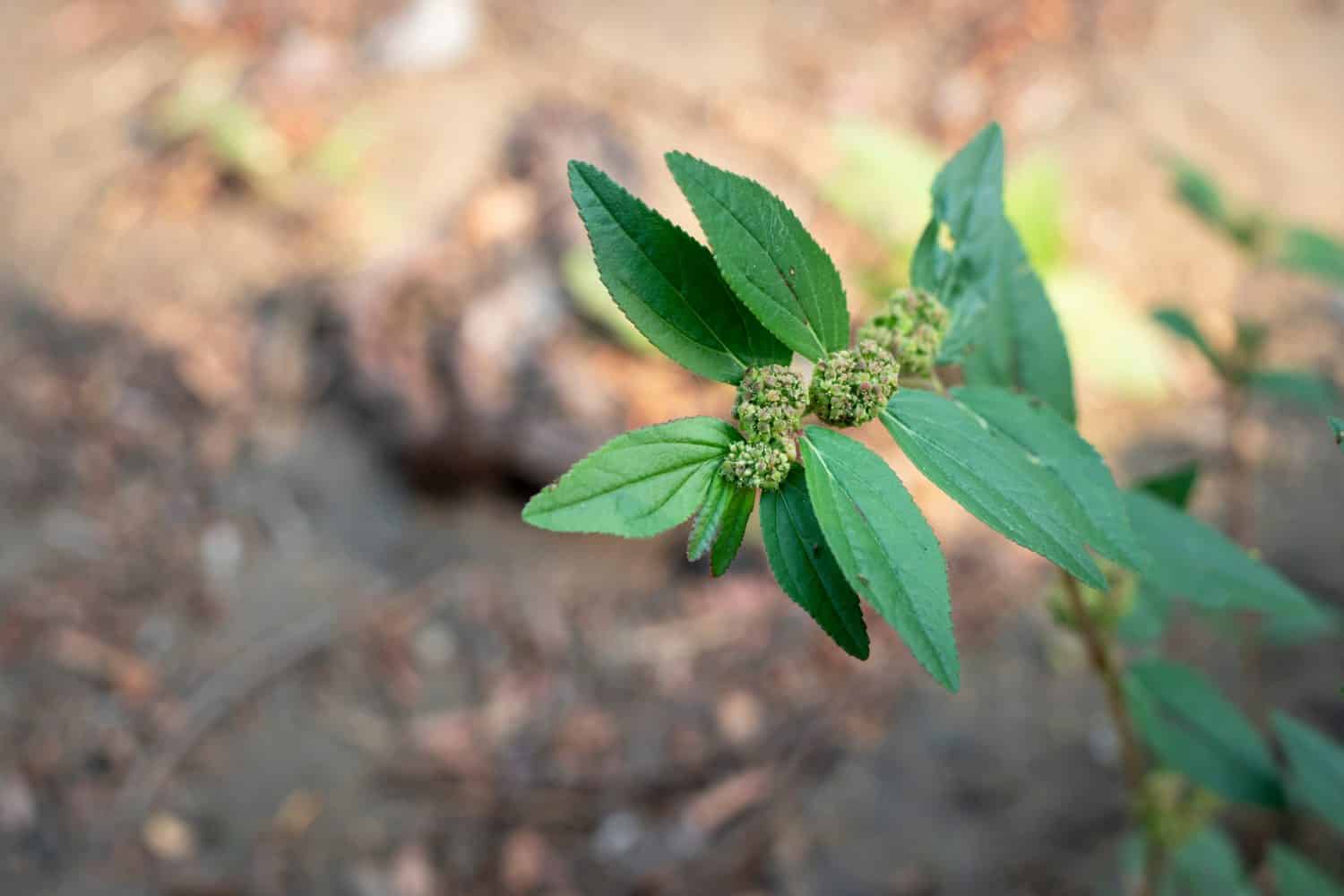
Most people have an allergy to the pollen produced by this plant.
©angin hiqaru87/Shutterstock.com
This dangerous plant in New South Wales can be found along roadsides or in gardens. It is considered a highly common weed in Australia. It has greenish-brown stems, and the leaves and stems are covered in sticky hairs. The leaves have an oval shape with pointed ends and are green in color. While only mildly toxic, this plant can still cause skin irritation to those who come into contact with it.
Its sticky hairs allow it to stick to clothing easily, making it easier to come into contact with people. Most people have an allergy to the pollen produced through the plant. Allergic reactions to asthma weed include asthma, hay fever, skin irritations, and more.
Rhus Tree (Toxicodendron succedaneum)
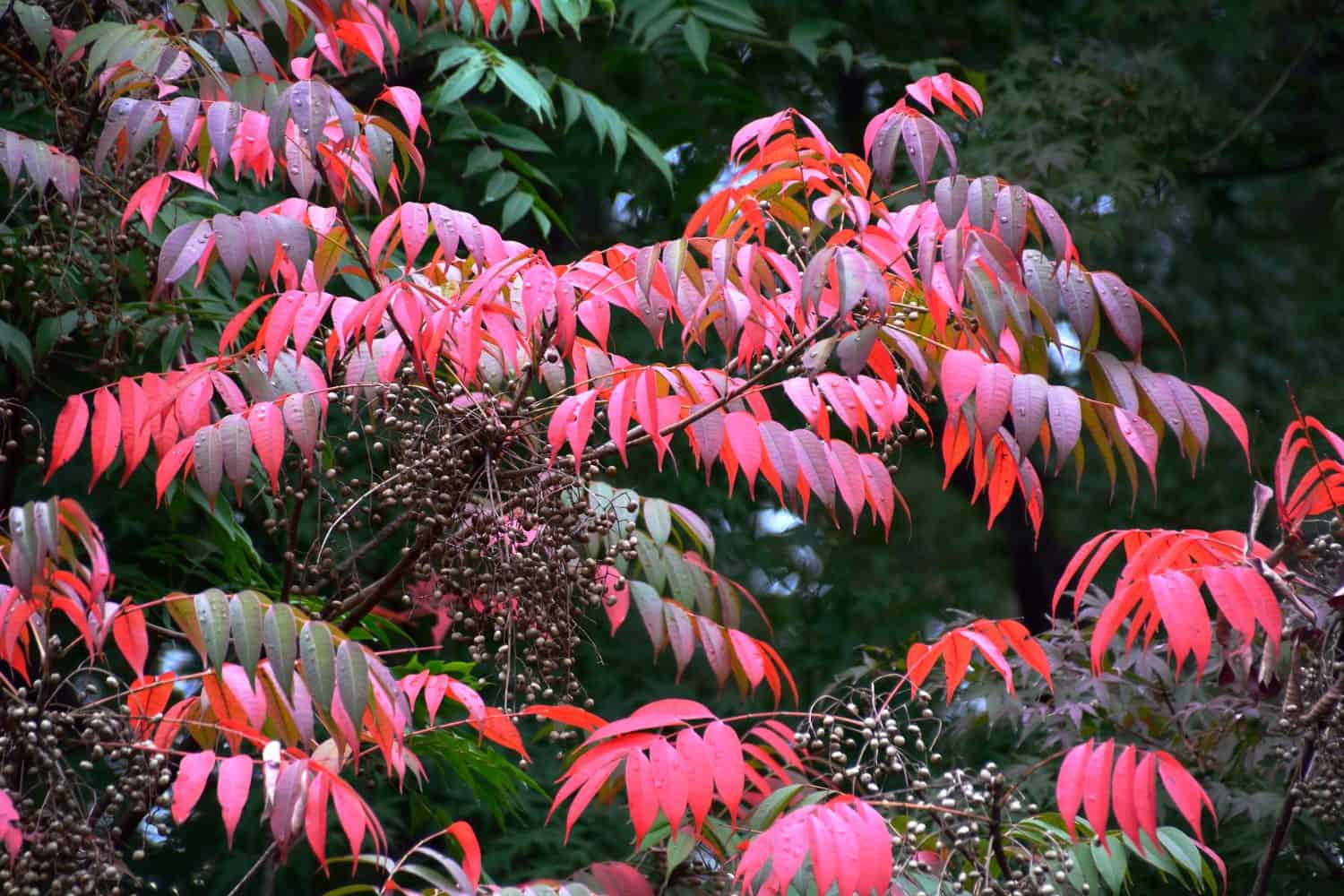
Coming into contact with the sap from this tree can lead to rash, redness, itching, and blisters.
©High Mountain/Shutterstock.com
This small, deciduous tree grows to be 16-26 feet tall. Its trunk is covered in smooth, grey bark, with green leaves in the summer and red leaves in the autumn. This tree’s toxins can cause severe skin reactions in people. Some people report having a reaction from just standing under the tree.
Coming into contact with the sap can lead to rash, redness, itching, and blisters. It can also cause swelling in the face, arms, and legs. The sap and remnants of this tree can be on shoes, tools, or clothes for up to a year, and symptoms may not appear until 12 hours or even 7 days later.
Summary of Dangerous Plants That Grow in New South Wales
| Plant | Scientific Name | Side Effects |
|---|---|---|
| Yellow Oleander | Thevetia peruviana | Nausea, vomiting, abdominal pain. |
| Castor Bean Plant | Ricinus communis | Can cause serious harm and death. |
| Silverleaf Nightshade | Solanum elaeagnifolium | Diarrhea, weight loss, and arrhythmia. |
| Sea Spurge | Euphorbia paralias | Skin irritation. |
| Stinging Nettle | Urtica dioica | Stinging and swelling on the skin. |
| Hemlock | Conium maculatum | Can cause trembling and respiratory disease. |
| Poison Ivy | Toxicodendron radicans | Redness, itching, and swelling. |
| Blind Cactus | Opuntia rufida | Various skin irritations. |
| Pellitory | Parietaria judaica | Most people have an allergy to the pollen produced by this plant. |
| Rhus Tree | Toxicodendron succedaneum | Rash, redness, itching, and blisters. |
Comprehensive List of Dangerous Plants That Grow in New South Wales
Here is a more comprehensive list of dangerous plants that grow in New South Wales, Australia.
- Angels Trumpet (Brugmansia)
- Blind Cactus (Opuntia rufida)
- Castor Bean (Ricinus communis)
- Crab’s Eye (Abrus precatoruis)
- Grevillia (Grevillea)
- Gympie Gympie (Dendrocnide moroides)
- Hemlock (Conium maculatum)
- Holly (Llex aquifolium)
- Hydrangea (Hydrangea)
- Milky Mangrove (Exoecaria agallocha)
- Pellitory (Parietaria judaica)
- Poison Ivy (Toxicodendron radicans)
- Prunus Species ( Prunus domestica)
- Rhubarb (Rheum x hybridum)
- Rhus Tree (Toxicodendron succedaneum)
- Sea Spurge ( Euphorbia paralias)
- Silky Oak (Grevillea robusta)
- Silverleaf Nightshade (Solanum elaeagnifolium)
- Stinging Nettle (Urtica dioica)
- Strychnine Tree (Strychnos nux-vomica)
- White Cedar (Melia Azedarach)
- Yellow Oleander (Thevetia peruviana)
- Yucca (Yucca)
The photo featured at the top of this post is © MT.PHOTOSTOCK/Shutterstock.com
Thank you for reading! Have some feedback for us? Contact the AZ Animals editorial team.







